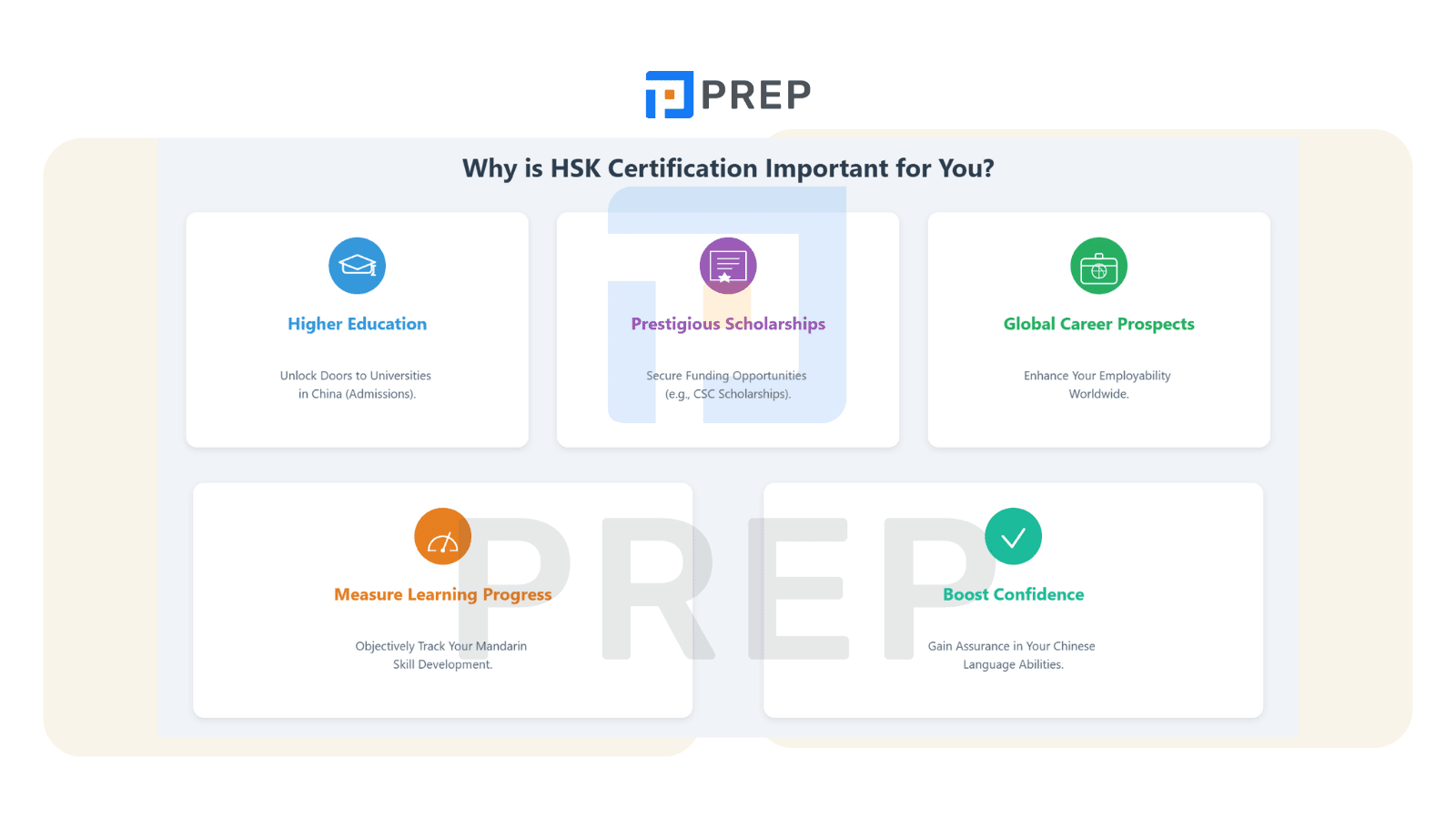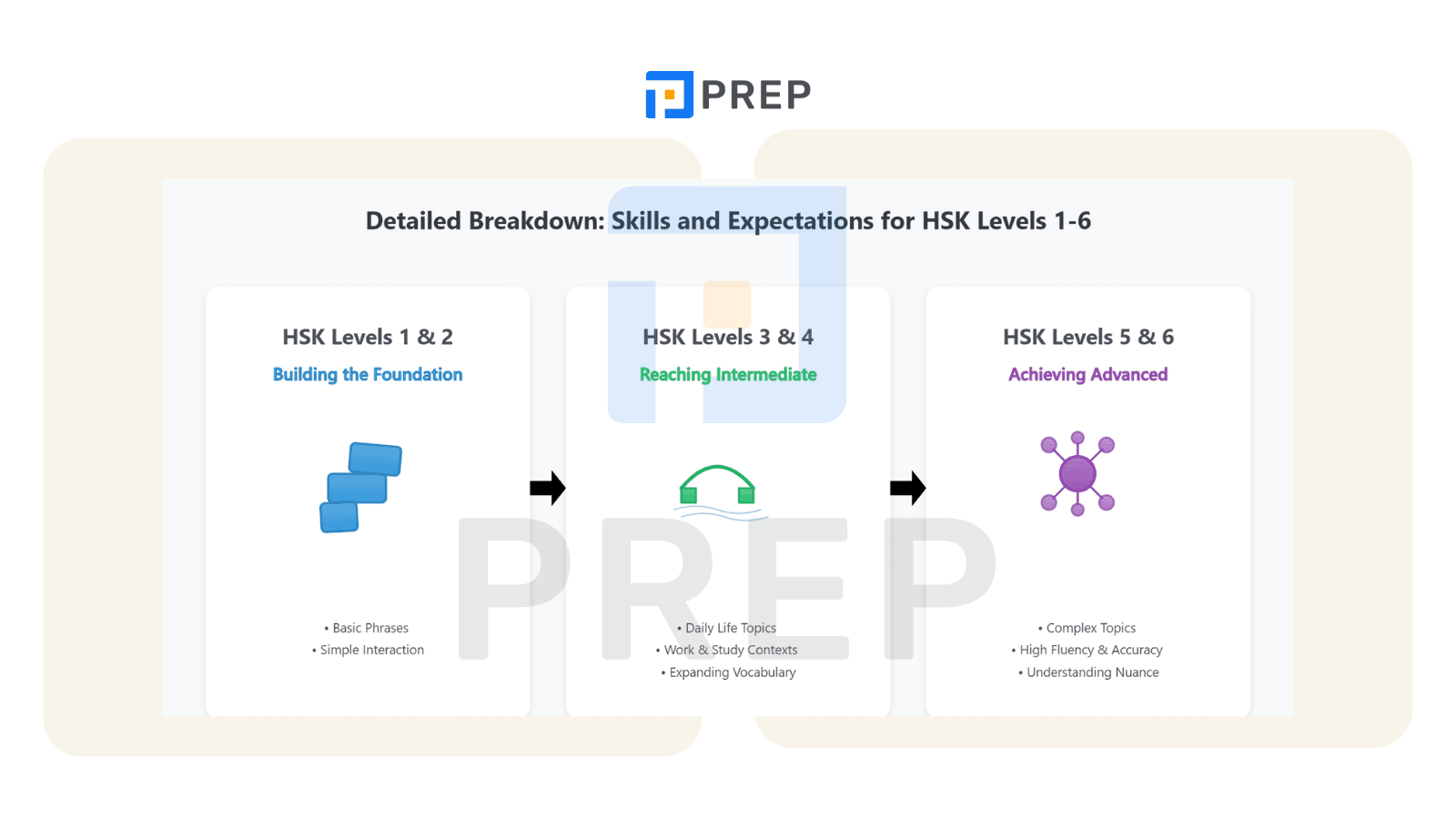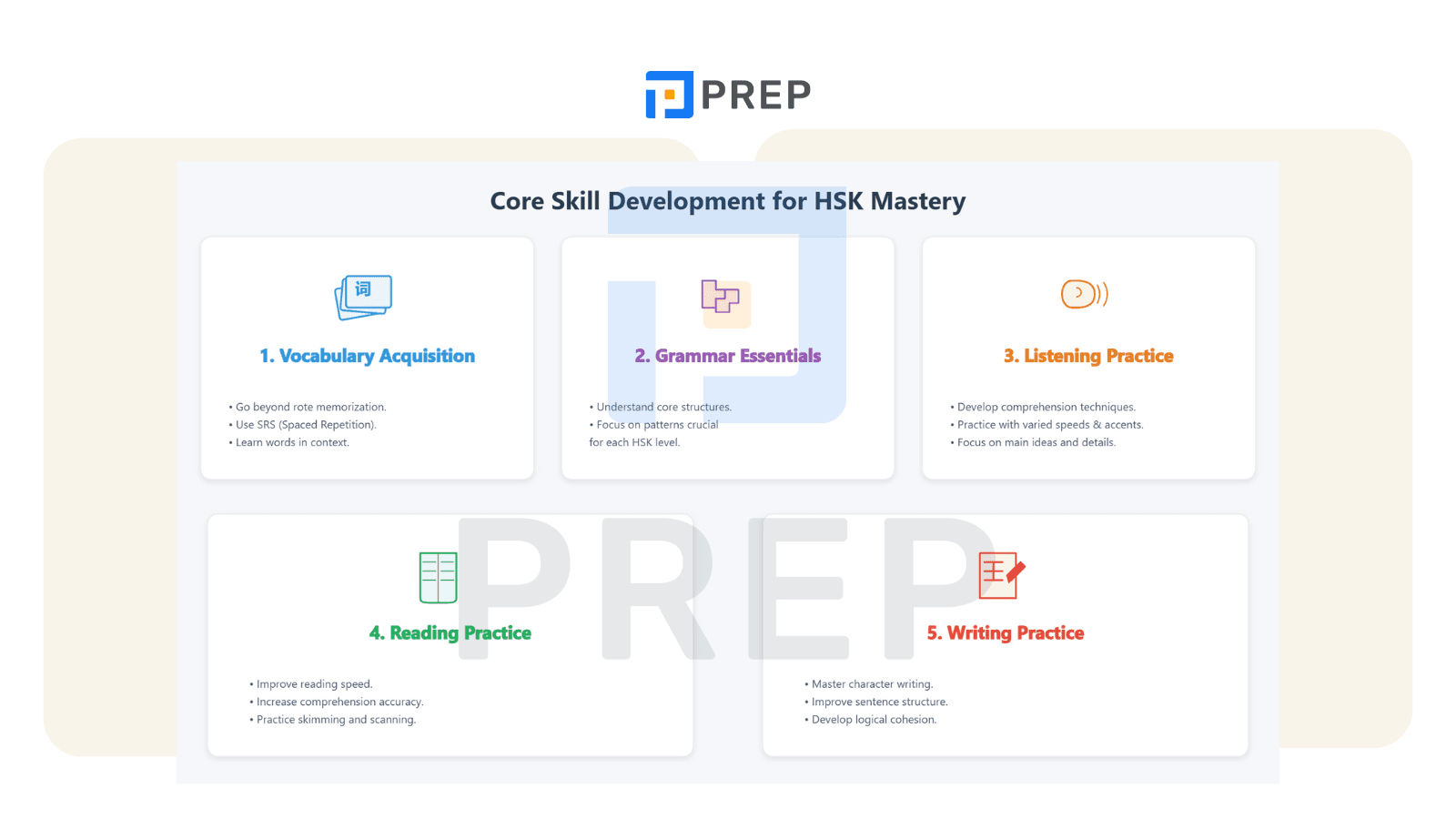HSK Test Explained: Your Ultimate Guide (Levels 1-9, Prep & Registration)
Are you navigating the complex world of Chinese language certification but feeling overwhelmed by conflicting information about the HSK exam structure, requirements, and preparation strategies? For international students and professionals, understanding China's official language proficiency assessment can mean the difference between academic acceptance, scholarship opportunities, and career advancement—or frustrating setbacks and missed opportunities.
The HSK test (Hanyu Shuiping Kaoshi or 汉语水平考试) serves as the standardized Chinese proficiency examination recognized worldwide for evaluating non-native speakers' Mandarin abilities across listening, reading, writing, and speaking domains. This comprehensive guide unpacks everything from basic structure to advanced preparation tactics.
Beyond simple test preparation, understanding the HSK framework illuminates the entire Chinese language learning journey. The system's progression from elementary communication (HSK 1-2) through intermediate proficiency (HSK 3-4) to advanced mastery (HSK 5-6) mirrors the natural language acquisition process. Recently, the introduction of the HSK 3.0 framework has expanded this continuum further with levels 7-9, incorporating sophisticated translation and interpretation skills for the highest levels of academic and professional contexts. This evolution reflects China's commitment to comprehensive language assessment aligned with international standards while addressing the needs of an increasingly diverse global user base.
Different stakeholders approach the HSK with distinct objectives: university applicants need specific certification levels for admission requirements, scholarship seekers aim to maximize competitive scores, professionals target industry-relevant language capabilities, while independent learners use the structured benchmarks to validate their progress. Each pathway demands tailored preparation strategies focusing on different aspects of the Chinese language test HSK components.
This guide delivers practical value through systematic breakdown of test components, level-specific preparation strategies, registration procedures, and score interpretation frameworks. You'll discover how to navigate both classic and new HSK structures while developing essential skills for examination success that translate to real-world communication proficiency.
Ready to master the HSK? Continue reading for a step-by-step roadmap that transforms this challenging examination into a structured, achievable milestone in your Chinese language journey.
- I. What is the HSK Test? Unpacking China's Official Chinese Proficiency Exam
- 1. Defining HSK: More Than Just an Acronym (Hanyu Shuiping Kaoshi)
- 2. The Purpose Behind HSK: Assessing Real-World Chinese Communication Skills
- 3. Who Takes the HSK? Identifying the Target Audience (Students, Professionals, Learners)
- 4. Administering Body: Understanding the Role of Hanban / CLEC
- 5. Why Trust This Guide? Our Commitment to Accurate & Comprehensive HSK Information
- II. The Real Value: Why is HSK Certification Important for You?
- 1. Benefit 1: Unlocking Doors to Higher Education in China (University Admissions)
- 2. Benefit 2: Securing Prestigious Scholarships (e.g., CSC Scholarships)
- 3. Benefit 3: Enhancing Your Global Career Prospects & Employability
- 4. Benefit 4: Objectively Measuring Your Mandarin Learning Progress
- 5. Benefit 5: Boosting Confidence in Your Chinese Language Abilities
- III. Decoding HSK Levels: From Foundational Knowledge to Advanced Fluency
- IV. Inside the Exam Room: Understanding the HSK Test Format and Structure
- V. Your Path to Success: Effective HSK Preparation Strategies
- VI. Practicalities: HSK Registration, Test Day, Scores, and Validity
- VII. Broadening Your Perspective: HSK FAQs and Comparisons
- VIII. From Knowledge to Action: Embracing Your HSK Journey

I. What is the HSK Test? Unpacking China's Official Chinese Proficiency Exam
1. Defining HSK: More Than Just an Acronym (Hanyu Shuiping Kaoshi)
HSK stands for Hanyu Shuiping Kaoshi (汉语水平考试), which translates to "Chinese Proficiency Test." This standardized international examination evaluates non-native speakers' ability to communicate in Mandarin Chinese in daily, academic, and professional contexts. The Chinese language test HSK serves as the most widely recognized benchmark of Chinese language proficiency worldwide. Administered by China's Center for Language Education and Cooperation, the HSK Chinese proficiency test has become the gold standard for measuring Mandarin abilities.
2. The Purpose Behind HSK: Assessing Real-World Chinese Communication Skills
The HSK measures practical communicative abilities rather than theoretical knowledge. The examination evaluates how effectively you can understand and use Mandarin Chinese in real-world situations spanning academic environments, professional settings, and everyday interactions. Its framework assesses listening, reading, writing, and speaking skills through carefully designed tasks that mirror authentic communication challenges you will encounter in Chinese-speaking environments. The HSK Chinese test is designed to evaluate real-world language application rather than abstract linguistic theory.
3. Who Takes the HSK? Identifying the Target Audience (Students, Professionals, Learners)
The HSK attracts diverse test-takers with specific goals. Foreign students apply with HSK scores to secure admission to Chinese universities and qualify for scholarships. Professionals seeking employment opportunities with Chinese companies or in China demonstrate their language competency through HSK certification. Independent learners use the HSK to objectively measure their progress and set concrete milestones in their Chinese language journey. The HSK Mandarin test has become increasingly important for anyone serious about demonstrating their Chinese language proficiency.
4. Administering Body: Understanding the Role of Hanban / CLEC
The Center for Language Education and Cooperation (CLEC, formerly known as Hanban) oversees the development, administration, and global promotion of the HSK. This official Chinese government organization establishes test standards, creates examination materials, and authorizes testing centers worldwide to ensure consistency and quality in HSK administration. The organization continually refines the HSK exam structure based on research and global language assessment standards.
5. Why Trust This Guide? Our Commitment to Accurate & Comprehensive HSK Information
At PREP, we draw on years of expertise in language assessment and Chinese language instruction to provide you with authoritative HSK guidance. Our team maintains direct communication with official HSK administrators and continuously updates our resources based on the latest examination specifications. This guide synthesizes official regulations, pedagogical insights, and practical experience to deliver reliable, actionable information for your HSK testing journey. We understand the challenges of preparing for Chinese exams and have helped thousands of students succeed in various HSK levels.
II. The Real Value: Why is HSK Certification Important for You?
The HSK offers concrete advantages that extend far beyond a simple certificate, opening doors to educational, professional, and personal growth opportunities.
1. Benefit 1: Unlocking Doors to Higher Education in China (University Admissions)
HSK certification serves as a mandatory prerequisite for admission to degree programs taught in Chinese at universities across China. Most undergraduate programs require HSK 4 or HSK 5, while graduate programs typically expect HSK 5 or HSK 6, depending on the field of study and the institution's specific requirements. Without appropriate HSK scores, admission applications remain incomplete. Universities specifically look for official results from standardized HSK tests rather than other measures of language ability.
2. Benefit 2: Securing Prestigious Scholarships (e.g., CSC Scholarships)
The Chinese Government Scholarship (CSC) and other major funding opportunities consider HSK scores as crucial selection criteria. Competitive scholarships often prioritize candidates with strong HSK performance, with higher scores significantly increasing your chances of securing financial support. Some scholarships even specify minimum HSK levels as basic eligibility requirements. The HSK examination results often serve as the deciding factor between otherwise equally qualified candidates.
3. Benefit 3: Enhancing Your Global Career Prospects & Employability
HSK certification provides employers with a standardized measurement of your Chinese language capabilities. Companies engaged in China-related business value HSK qualifications when selecting candidates for positions requiring communication with Chinese partners, clients, or colleagues. The certificate validates your language skills through an internationally recognized standard rather than vague self-assessments. In international business circles, the HSK Chinese exam is widely recognized as the definitive measure of Mandarin proficiency.
4. Benefit 4: Objectively Measuring Your Mandarin Learning Progress
The HSK provides clear benchmarks that track your advancement in Chinese language acquisition. Each level represents defined competencies with specific vocabulary and grammatical structures, allowing you to identify and address skill gaps systematically. This objective framework helps maintain focus and motivation throughout your learning journey. Regular HSK exams offer concrete evidence of your improving abilities in a way that subjective self-assessment cannot.
5. Benefit 5: Boosting Confidence in Your Chinese Language Abilities
Successfully passing HSK levels validates your efforts and reinforces your capabilities in Chinese communication. This official recognition builds confidence when using Mandarin in real-world situations and motivates continued improvement. The achievement of each HSK level provides tangible evidence of progress that can otherwise seem abstract in language learning. Many students report that preparing for and passing an H S K examination significantly increases their willingness to use Chinese in authentic situations.

III. Decoding HSK Levels: From Foundational Knowledge to Advanced Fluency
1. Understanding the Framework: HSK 1-6 vs. The New HSK 3.0 Standard (Nine Bands)
The HSK system currently exists in two parallel frameworks that learners should understand. The classic HSK 1-6 system remains widely implemented and recognized globally, providing six distinct proficiency levels. Simultaneously, the new HSK 3.0 Standard introduces a more granular nine-band structure, particularly expanding the assessment of advanced abilities. This transition aims to better align with the Common European Framework of Reference (CEFR) and provide more precise proficiency measurement. Anyone planning to take the Chinese exam HSK should understand which framework applies to their testing location.
1.1 The Classic HSK 1-6 System: Structure and Common Recognition
The HSK 1-6 framework progresses from elementary (HSK 1-2) through intermediate (HSK 3-4) to advanced proficiency (HSK 5-6). This established system remains the predominant testing standard worldwide, with clearly defined skills, vocabulary requirements, and grammar expectations at each level. Most educational institutions and employers continue to specify requirements using this six-level scale. The structure of these HSK exams follows a consistent pattern that allows for reliable comparison of abilities across different test-takers.
1.2 Introducing HSK 3.0 (Nine Bands): Rationale, Structure, and Key Changes (Focus on Advanced Levels 7-9 Integration)
The HSK 3.0 system introduces a "Three Stages, Nine Bands" structure that refines the assessment continuum. The fundamental change is the expansion of the advanced spectrum into three distinctive levels (7-9) that incorporate translation and interpreting skills previously absent from the HSK framework. This enhanced structure provides more nuanced evaluation of high-level proficiency, particularly for academic and professional contexts requiring sophisticated communication. The system introduces more comprehensive assessment of cultural competence, rhetorical sophistication, and specialized vocabulary necessary for advanced academic discourse and professional environments. These newly developed HSK tests represent a significant evolution in Chinese language assessment.
1.3 Crucial Update: Current Status of HSK 3.0 Rollout & Impact on Levels 1-6 (Ensuring Accuracy and Trustworthiness)
As of 2024, the HSK 3.0 implementation remains in transition. The advanced levels (7-9) have been officially launched and are available at select testing centers, while levels 1-6 continue to follow the classic format and standards. The complete transition timeline for lower and intermediate levels remains pending official confirmation. For the most current implementation status, always verify information through the official Chinese Testing International website (www.chinesetest.cn). This evolving situation requires test-takers to stay informed about which system applies to their target testing center and date. Understanding these changes is crucial for anyone preparing for an HSK examination.
2. Detailed Breakdown: Skills and Expectations for HSK Levels 1-6
2.1 HSK Level 1 & 2: Building the Foundation (Basic Phrases, Simple Interaction)
HSK 1 and 2 establish elementary Chinese communication skills. At Level 1, you can understand and use familiar everyday expressions and very basic phrases meeting immediate needs, recognizing and employing approximately 150 common Chinese words. HSK 2 expands this foundation to about 300 words, enabling simple communication about routine information, personal background, and immediate environment. You can form basic sentences using fundamental grammar patterns, handle simple transactions, and engage in short social exchanges. These levels suit absolute beginners and those with minimal previous exposure to Chinese. The HSK test at these beginner levels focuses primarily on recognizing and understanding basic vocabulary and grammar patterns.
2.2 HSK Level 3 & 4: Reaching Intermediate Proficiency (Daily Life, Work, Study Topics)
HSK 3 and 4 represent the intermediate tier, marking significant expansion in practical communication ability. HSK 3 (approximately 600 words) enables handling of routine situations encountered while traveling, participating in familiar social contexts, and expressing personal experiences. HSK 4 (approximately 1,200 words) represents a substantial milestone—the ability to converse confidently on a wide range of familiar subjects related to work, school, and leisure. You can explain viewpoints on topical issues, describe experiences, and navigate most situations likely to arise while traveling in Chinese-speaking regions with reasonable fluency and spontaneity. The Mandarin test HSK at these levels requires processing more complex texts and audio materials.
2.3 HSK Level 5 & 6: Achieving Advanced Communication (Complex Topics, Fluency, Nuance)
HSK 5 and 6 represent advanced proficiency, approaching the capabilities of educated native speakers. HSK 5 (approximately 2,500 words) enables effective communication in demanding professional and academic environments, understanding extended speech, complex text, and implicit meaning. HSK 6 (approximately 5,000+ words) demonstrates mastery—you can understand virtually everything heard or read, summarize information from diverse sources, express yourself spontaneously with exceptional fluency, and differentiate finer shades of meaning even in complex situations. These levels require sophisticated vocabulary, advanced grammatical structures, and cultural nuance suitable for university study or professional work in Chinese. These high-level HSK exams demand near-native proficiency in understanding and producing complex Chinese language content.
2.4 HSK 1-6 At-a-Glance: Vocabulary, Grammar Focus, and Approximate CEFR Alignment
The HSK framework progresses systematically through defined vocabulary thresholds and grammatical complexity. HSK 1 (150 words, A1 CEFR) covers basic structures like simple questions and statements. HSK 2 (300 words, A1-A2) introduces additional sentence patterns and basic particles. HSK 3 (600 words, A2) incorporates compound sentences and additional tenses. HSK 4 (1,200 words, B1) includes complex structures and subordinate clauses. HSK 5 (2,500 words, B2) requires sophisticated connectors and idioms, while HSK 6 (5,000+ words, C1-C2) demands near-native rhetorical devices and nuanced expression. Understanding this progressive structure helps learners select the appropriate Chinese exam HSK level to target.

3. Exploring the New Advanced Levels: HSK 7-9 Requirements
Skills Emphasis in HSK 7-9: Translation, Interpretation, and High-Level Discourse
The advanced HSK 7-9 bands evaluate sophisticated language mastery beyond mere communication fluency. These levels assess professional-grade skills including bidirectional Chinese-English translation of complex texts, interpretation abilities for specialized discussions, and advanced literacy in diverse genres including classical Chinese. HSK 7-9 examines competency with rhetorical devices, cultural references, and domain-specific terminology across academic, literary, and professional contexts. The vocabulary threshold exceeds 8,000 words, with expectations for nuanced understanding of connotation, metaphor, and cultural subtext that approaches educated native proficiency. The examen HSK at these advanced levels represents a significant achievement in Chinese language mastery.
4. Choosing Your Target: Which HSK Level is Right for Your Goals?
4.1 Self-Assessment Strategies: Gauging Your Current Proficiency
Determine your starting point through systematic self-evaluation. Review the official HSK vocabulary lists for each level, testing your recognition and usage comfort. Take official sample tests available through the Chinese Testing International website to identify your current performance range. Consider using PREP's placement tools that incorporate adaptive assessment algorithms to pinpoint your proficiency precisely across all language skills. These preliminary HSK tests help you avoid targeting a level that's either too challenging or not challenging enough.
4.2 Matching HSK Levels to Specific Academic or Professional Requirements
Research the exact HSK requirements for your target institution or position. Most undergraduate programs in China specify minimum thresholds of HSK 4 or HSK 5, while graduate programs typically require HSK 5 or HSK 6. Scientific and engineering fields sometimes accept lower HSK levels than humanities programs, which demand more sophisticated language skills. For professional positions, HSK 4 suffices for entry-level roles with limited Chinese communication, while HSK 5-6 is expected for positions requiring regular negotiation or complex interactions in Chinese. Different organizations may have specific preferences for particular HSK Chinese exam versions or minimum score thresholds.
IV. Inside the Exam Room: Understanding the HSK Test Format and Structure
1. The HSK Written Test Components (Levels 1-6)
The HSK written examination follows a consistent format across levels while progressively increasing in complexity, duration, and depth. Understanding the specific structure of each test section prepares you for efficient time management and strategic performance during the HSK testing process.
1.1 Mastering the Listening Section: Question Types and Strategies
The HSK listening component evaluates comprehension through diverse question formats. At lower levels (1-2), you'll encounter picture identification tasks where you select images that match spoken descriptions. Higher levels incorporate dialogues and monologues followed by multiple-choice questions testing both main idea comprehension and specific detail recognition. Advanced levels (5-6) include extended lectures and complex conversations requiring note-taking skills. Developing selective listening strategies for identifying key information amid increasingly natural speech rates proves essential for success on this section of the Chinese language test HSK.
1.2 Navigating the Reading Section: Passage Styles and Comprehension Skills
The reading section tests text comprehension through varied formats tailored to each level. HSK 1-2 features simple sentences, short dialogues, and basic instructions with straightforward comprehension questions. HSK 3-4 incorporates longer passages including narratives, descriptions, and practical texts like advertisements or schedules. HSK 5-6 presents sophisticated articles from newspapers, academic journals, and literary sources with nuanced questions requiring inference and critical analysis. Question types span multiple-choice, fill-in-blank, sentence ordering, and text matching formats designed to assess both scanning and in-depth understanding. Many candidates find this section of the HSK examination particularly challenging at higher levels.
1.3 Excelling in the Writing Section (HSK 3+): Tasks and Assessment Criteria
The writing component appears from HSK 3 upward with progressively challenging tasks. HSK 3 requires arranging words into grammatically correct sentences and completing partial sentences. HSK 4 adds picture description tasks using specified vocabulary. HSK 5-6 demands composition writing with clear organization, appropriate register, and persuasive argumentation. Assessment criteria include grammatical accuracy, vocabulary range and appropriateness, coherent organization, and character writing precision. Higher levels emphasize stylistic sophistication, rhetorical effectiveness, and argument development. This section of the HSK Chinese proficiency test evaluates your productive language ability beyond mere recognition.
1.4 Test Duration and Question Counts Per Level
The HSK examination length increases proportionally with level advancement. HSK 1 takes approximately 40 minutes with 40 questions, while HSK 6 extends to nearly 140 minutes with over 100 questions. The balanced assessment allocates appropriate time to each section, with higher levels dedicating more time to complex reading passages and writing tasks. This progressive structure reflects the increasing cognitive demands and processing complexity required at each proficiency threshold. Time management becomes increasingly crucial as you progress through HSK levels.
2. The HSK Speaking Test (HSKK - Hanyu Shuiping Kouyu Kaoshi) Explained
2.1 HSKK Structure: Levels (Beginner, Intermediate, Advanced) and Tasks
The HSKK speaking test operates independently from the written examination, offering three distinct proficiency levels with specialized assessment methods. The Beginner level evaluates basic communication through picture description, sentence repetition, and answering simple questions. The Intermediate level incorporates reading passages aloud, describing situations, and responding to topic-based questions with personal opinions. The Advanced level demands sophisticated expression through topic elaboration, storytelling based on picture sequences, and articulating viewpoints on complex social or cultural issues with supporting arguments. The HSK tests for speaking ability require different preparation strategies than the written components.
2.2 Understanding the Relationship Between HSK and HSKK
While technically separate certifications, the HSK and HSKK complement each other as comprehensive language assessment tools. Many universities and scholarship programs require both examinations to evaluate written and oral communication abilities. The HSKK is particularly emphasized for programs involving extensive interpersonal communication or teaching roles. Generally, candidates should target HSKK levels that correspond with their HSK level—Beginner HSKK with HSK 1-2, Intermediate HSKK with HSK 3-4, and Advanced HSKK with HSK 5-6. Together, the written HSK and spoken HSKK provide a complete picture of a candidate's Mandarin test proficiency across all communication domains.
V. Your Path to Success: Effective HSK Preparation Strategies
1. Building a Solid Foundation: Creating Your Personalized Study Plan
1.1 Setting Achievable Goals and Milestones
Establish clear, measurable objectives for your HSK preparation through structured goal setting. Define your target HSK level with a specific achievement timeline based on your current proficiency and available study hours. Break this ultimate goal into smaller weekly milestones tracking vocabulary acquisition, grammar mastery, and practice test performance improvements. These concrete benchmarks transform the abstract challenge of language learning into manageable achievements that maintain motivation and provide regular feedback on your progress. Effective preparation for HSK testing involves strategic planning rather than haphazard studying.
1.2 Time Management and Consistent Practice Schedules
Develop a sustainable study routine that accommodates regular practice without leading to burnout. Daily sessions of 30-60 minutes prove more effective than occasional marathon study periods, as language acquisition requires consistent reinforcement. Integrate Chinese practice into your existing routine—listening during commutes, vocabulary review during breakfast, or character practice before bed. This systematic approach ensures steady progress while accommodating other responsibilities, creating sustainable habits rather than sporadic cramming sessions. Consistency is the key to success in HSK preparation. Many successful candidates schedule regular practice sessions for HSK exams throughout their week rather than cramming before the test date.
2. Core Skill Development for HSK Mastery
2.1 Vocabulary Acquisition: Beyond Rote Memorization (Using SRS, Context)
Master the HSK vocabulary efficiently through contextualized learning rather than isolated word lists. Implement Spaced Repetition Systems (SRS) like Anki or Pleco that algorithmically schedule reviews based on your retention patterns. Study words within example sentences that demonstrate proper usage and collocations. Create thematic vocabulary clusters around daily topics (transportation, food, work) rather than alphabetical lists. Reinforce new words through multiple channels—writing characters, using words in conversations, hearing them in audio materials—to create robust mental connections. Vocabulary acquisition forms the foundation of success on all components of the HSK Chinese exam.
2.2 Grammar Essentials: Understanding Structures Crucial for Each Level
Focus on mastering grammatical patterns specifically tested at your target HSK level rather than studying grammar comprehensively. Identify the key structures through analysis of official HSK syllabi and practice tests. For each pattern, create your own example sentences applying the structure to personal contexts, reinforcing both understanding and retention. Practice recognizing these patterns in reading passages and implementing them in writing exercises. Progressive mastery of level-appropriate grammar provides the framework for accurate communication on HSK tests at any level.
2.3 Targeted Practice: Listening Comprehension Techniques
Develop strategic listening skills through structured practice methods. Begin with transcribed audio materials that allow you to compare what you hear with the written text. Gradually progress to listening without textual support. Practice note-taking techniques that capture key information without attempting to transcribe everything. Expose yourself to various accents and speech rates through diverse audio sources including news broadcasts, podcasts, and conversation recordings. Regular dictation exercises improve the connection between sound recognition and character knowledge. The listening section often proves challenging for many HSK candidates without specific preparation.
2.4 Targeted Practice: Reading Speed and Accuracy Improvement
Enhance reading efficiency through deliberate practice techniques targeting both speed and comprehension. Implement timed reading exercises that gradually increase your processing pace while maintaining understanding. Develop strategic reading skills including skimming for main ideas, scanning for specific information, and detailed reading for nuance. Practice recognizing sentence patterns and high-frequency characters instantly rather than decoding them character by character. Read texts slightly above your current level to expand vocabulary while reinforcing existing knowledge. Reading speed becomes increasingly important at higher HSK testing levels.
2.5 Targeted Practice: Writing Skills (Characters, Structure, Cohesion)
Cultivate HSK writing proficiency through systematic practice addressing multiple dimensions. Master character writing with regular handwriting practice following correct stroke order and proportions. Study model essays for each HSK writing task to understand structural expectations and evaluation criteria. Develop paragraph organization skills using appropriate connectors and transition phrases to enhance coherence. Expand your repertoire of sentence patterns and expressions that demonstrate linguistic sophistication, particularly for HSK 5-6 where stylistic elements influence scoring. Writing skills become increasingly important when preparing for the HSK Chinese test at intermediate and advanced levels.

3. Selecting the Best HSK Preparation Resources
3.1 Official Materials: Textbooks (e.g., Standard Course) and Past Papers
Prioritize official HSK preparation materials that directly reflect examination content and expectations. The HSK Standard Course series published by Beijing Language and Culture University Press provides systematically structured learning materials explicitly aligned with each HSK level. Supplement these core textbooks with official past papers and sample tests available through the Chinese Testing International website. These authentic materials familiarize you with question formats, difficulty levels, and time constraints, significantly reducing test-day surprises. Official HSK tests from previous years provide the most accurate preparation experience.
3.2 Leveraging Technology: How AI-Powered Platforms Like PREP Optimize Learning
Accelerate your HSK preparation through intelligent learning systems that adapt to your individual needs. PREP's AI-driven platform analyzes your performance patterns to identify specific weaknesses and generates personalized study plans targeting these areas. The system provides dynamically adjusted exercises that concentrate on challenging vocabulary and grammar points while reinforcing mastery of easier content. Comprehensive mock tests simulate actual examination conditions while providing detailed feedback on performance. Real-time progress tracking helps maintain motivation by visualizing improvement across all skill areas. These technological tools can significantly enhance efficiency when preparing for HSK exams.
3.3 Supplementary Tools: Apps, Graded Readers, Language Partners
Complement your core study materials with diverse resources that reinforce learning through multiple channels. Mobile applications like Pleco provide on-demand vocabulary review and character writing practice. Graded readers with HSK-leveled vocabulary expand your reading exposure while maintaining comprehension. Language exchange partnerships provide conversational practice and cultural insights beyond textbook learning. These supplementary tools create a rich learning ecosystem that reinforces formal study while making the process more engaging and contextually meaningful. A multi-faceted approach yields the best results when preparing for HSK tests.
4. The Power of Practice: Using Mock Exams Effectively
4.1 Simulating Test Conditions for Realistic Preparation
Recreate authentic examination conditions through regular full-length mock tests. Set aside uninterrupted time matching the actual test duration, use official answer sheets, and adhere strictly to section time limits. Minimize distractions and implement the same restrictions you'll face during the actual examination—no dictionaries, no additional notes, no breaks between sections. This environmental simulation builds mental stamina, reduces test anxiety, and identifies potential challenges in time management or concentration that might affect your performance. Regular practice with timed HSK tests under realistic conditions is essential for peak performance.
4.2 Analyzing Mistakes to Identify and Address Weaknesses
Transform assessment results into targeted improvement strategies through systematic error analysis. Review each incorrect answer to determine whether the mistake stemmed from vocabulary gaps, grammatical misunderstanding, careless errors, or time pressure. Categorize these errors to identify pattern weaknesses requiring focused attention. Create specialized practice sets addressing these specific deficiencies rather than generically reviewing all material. This precision approach concentrates your preparation efforts on areas with the highest potential for score improvement. Strategic analysis of practice HSK exam results maximizes the efficiency of your preparation time.
VI. Practicalities: HSK Registration, Test Day, Scores, and Validity
1. Signing Up for the HSK: A Step-by-Step Registration Guide
1.1 Locating Official Test Centers and Available Dates (Via chinesetest.cn)
Access the authoritative Chinese Testing International website (www.chinesetest.cn) to identify official HSK testing locations in your region. This central registration portal maintains the complete worldwide directory of authorized centers including universities, Confucius Institutes, and cultural organizations. The interactive calendar displays available test dates for each level and location, allowing you to select options compatible with your preparation timeline and geographical constraints. Always verify center information through this official source rather than third-party websites that may contain outdated or incorrect information. Finding convenient HSK tests locations is the first step in your registration process.
1.2 Navigating the Online Registration Portal
Complete the HSK registration process through the stepwise online system. Create a personal account on the Chinese Testing International website with accurate contact information ensuring you receive important notifications. Select your desired test type (HSK written and/or HSKK speaking), specific level, preferred testing center, and available date from the options displayed. Upload a recent passport-style photograph meeting the specified dimensional requirements. Verify all entered information carefully before submission, as correction opportunities may be limited after registration completion. The registration interface for HSK examinations is user-friendly but requires attention to detail.
1.3 Understanding HSK Test Fees and Payment
Prepare for HSK examination costs that vary based on test level and regional testing center policies. Higher HSK levels generally command increased fees reflecting the more extensive assessment requirements. Payment methods typically include credit cards, bank transfers, or local payment systems depending on your testing location. Complete payment promptly to confirm your registration, as spaces at popular testing centers fill quickly. Some centers impose late registration surcharges, so finalizing arrangements well ahead of deadlines proves financially advantageous. Budget accordingly for your HSK testing expenses.
2. Getting Your Results: Understanding HSK Scoring and Certificates
2.1 How the HSK is Scored: Interpreting Your Score Report
Understand the scoring methodology to accurately interpret your HSK results. The examination produces both section scores and a comprehensive total score. HSK 1-2 yields maximum scores of 200 points (100 each for listening and reading), while HSK 3-6 provides up to 300 points (100 each for listening, reading, and writing). Your score report presents these component scores separately alongside the total, allowing identification of relative strengths and weaknesses across language skills. Advanced HSK 7-9 implements distinct scoring frameworks that include translation and interpretation components. The scoring system for HSK examinations follows a consistent pattern across all levels.
2.2 Minimum Passing Scores for Each Level
Recognize the threshold requirements for successfully passing each HSK level. HSK 1-2 requires minimum total scores of 120/200 (60% correct), while HSK 3-6 require minimum total scores of 180/300 (60% correct). Some institutions establish higher thresholds for specific programs—competitive universities might require 210+ for HSK 5 or 240+ for HSK 6. Familiarize yourself with the specific score requirements for your target institution rather than simply aiming for the minimum passing standard. Understanding passing thresholds helps you set appropriate target scores for your HSK tests.
2.3 Receiving Your Official HSK Certificate
Navigate the results notification and certificate issuance process. Initial score reports typically become available online approximately one month after the examination date through the Chinese Testing International website using your registration credentials. Physical certificates are subsequently mailed to your designated address or to your testing center for local collection, with delivery timelines varying by region from 1-3 months after the test date. Verify your delivery address accuracy during registration to prevent certificate delivery complications. The official HSK Chinese test certificate is a valuable credential recognized worldwide.
2.4 Certificate Validity: How Long Your HSK Score Lasts (Typically 2 Years)
Recognize the standard two-year validity period for HSK certification. Universities, scholarship programs, and employers generally accept HSK results obtained within two years of application submission. This time limitation reflects the potential for language skills to deteriorate without active maintenance. Permanent archival records of your scores remain available through Chinese Testing International for personal reference, but most formal applications require certificates within the current validity window. Plan your HSK testing timeline accordingly if targeting specific application deadlines for academic or professional opportunities.
VII. Broadening Your Perspective: HSK FAQs and Comparisons
1. Quick Insights: Answering Your Top HSK Questions
1.1 Is taking the HSK mandatory for studying/working in China?
HSK certification requirements vary across institutions and employment contexts. Degree programs taught in Chinese typically mandate specific HSK levels as admission prerequisites, while English-taught programs might waive this requirement or accept lower levels. Similarly, employment positions requiring regular Chinese communication generally specify HSK thresholds, while roles primarily conducted in English might not. Always verify exact language certification requirements with your specific university or employer rather than assuming universal standards. The importance of HSK testing depends entirely on your specific educational or professional objectives in China.
1.2 What constitutes a "good" HSK score?
A "good" HSK score depends entirely on your specific objectives rather than abstract standards. While achieving the minimum passing threshold (60%) demonstrates basic competence, competitive contexts often require significantly higher performance. Prestigious universities might expect scores of 240+/300 on HSK 6 for humanities programs, while scholarship committees frequently prioritize applicants substantially exceeding minimum requirements. Evaluate typical scores for successful applicants to your specific program or position to establish appropriate personal targets. What qualifies as an exceptional score varies dramatically across different institutions and scenarios.
1.3 What are the main sections tested across all HSK written levels?
The HSK written examination consistently evaluates listening and reading comprehension across all six levels, providing fundamental assessment of receptive language skills. The writing component appears from HSK 3 upward, progressively increasing in complexity and weight. This structure reflects the natural language acquisition sequence, with receptive skills typically developing before productive abilities. The advanced HSK 7-9 examinations introduce additional components including translation and interpretation not present in lower levels. Understanding the common framework helps streamline preparation across multiple HSK tests.
1.4 Can HSK preparation significantly improve my overall Chinese?
HSK preparation delivers substantial benefits to general Chinese proficiency beyond exam success. The structured vocabulary acquisition, systematic grammar progression, and integrated skill development directly enhance everyday communication abilities. The examination's practical focus ensures that preparation activities develop functional language rather than test-taking tricks. Many learners report that the concrete benchmarks and assessment feedback provided through HSK preparation accelerate their overall Chinese mastery compared to unstructured learning approaches. The HSK Chinese exam preparation process yields lasting language benefits regardless of your test performance.
2. Situating HSK: How Does It Compare to Other Mandarin Tests?
2.1 HSK vs. TOCFL (Taiwan): What are the key differences in focus and recognition?
The HSK and TOCFL (Test of Chinese as a Foreign Language) represent parallel assessment systems from mainland China and Taiwan respectively, with notable differences. The HSK utilizes simplified characters exclusively and follows mainland pronunciation standards, while the TOCFL primarily employs traditional characters reflecting Taiwan's writing system. The HSK enjoys broader international recognition particularly for mainland Chinese universities and businesses, while the TOCFL holds specific relevance for Taiwan-focused academic and professional pursuits. The two tests utilize different framework structures, vocabulary lists, and cultural references reflecting their distinct administrative origins. Each serves specific contextual needs in the Chinese language testing landscape.
2.2 HSK vs. BCT (Business Chinese Test): When might the BCT be more suitable?
The HSK and BCT (Business Chinese Test) serve complementary purposes within the Chinese language certification ecosystem. While the HSK evaluates general language proficiency across academic and daily contexts, the BCT specifically assesses business-oriented communication skills including commercial vocabulary, negotiation language, and workplace interactions. The BCT proves more suitable for professionals focusing exclusively on business environments without broader academic interests. Many candidates pursue both certifications—the HSK demonstrating general proficiency and the BCT confirming specialized business language capabilities—particularly for careers involving commercial relations with Chinese companies. The specialized focus makes the BCT an excellent complement to HSK exams for business professionals.
VIII. From Knowledge to Action: Embracing Your HSK Journey
1. Key Takeaways: Consolidating Your Understanding of the HSK Test
The HSK examination represents the global standard for Chinese proficiency assessment with a clearly structured level progression from elementary to advanced communication. The systematic framework provides objective benchmarks for measuring language development through standardized evaluation of listening, reading, writing, and speaking skills. Understanding the examination format, preparation strategies, and practical logistics significantly reduces test anxiety while maximizing performance potential. The transition to the expanded HSK 3.0 system reflects China's commitment to comprehensive language assessment aligned with international standards. Thorough knowledge of the HSK tests structure provides a solid foundation for effective preparation.
2. The HSK as a Milestone, Not Just an Exam
View the HSK not merely as an evaluative hurdle but as a productive milestone in your Chinese language journey. The structured curriculum provides direction for systematic learning, breaking the overwhelming task of language mastery into manageable segments with clear objectives. The achievement of each level offers concrete validation of progress that motivates continued advancement. Rather than viewing preparation as test-focused cramming, recognize it as accelerated skill development that enhances your practical communication abilities. Many learners find that preparing for HSK examinations significantly accelerates their overall language development.
3. Leveraging Your HSK Knowledge for Continued Language Growth
Apply the insights from this guide to create a personalized HSK preparation strategy aligned with your specific goals. Identify your appropriate target level based on institutional requirements and current proficiency. Select suitable resources including official materials and technological learning platforms. Develop consistent study habits incorporating vocabulary acquisition, grammar mastery, and integrated skills practice. Track your progress through regular self-assessment and mock examinations leading to confident test performance. The structured approach to HSK exam preparation establishes learning habits that benefit your long-term language acquisition beyond certification. Many candidates report that preparing for HSK exams provides structure that accelerates their overall Chinese learning process.
4. Ready to Start? Resources to Help You Prepare with Confidence
Begin your HSK journey with strategic preparation resources designed for efficient progress. PREP provides comprehensive HSK courses with AI-driven personalization that adapts to your learning patterns and focuses attention on areas needing improvement. Our integrated assessment tools identify your current proficiency level and track progress throughout your preparation period. Whether targeting HSK 1 for initial certification or HSK 6 for advanced academic purposes, structured preparation with expert guidance transforms the challenge into an achievable objective with lasting language benefits. Start your Chinese test HSK preparation today with resources specifically designed for your target level.
For international students particularly concerned about the examen HSK (as it's often called in Spanish-speaking countries), we offer multilingual support and guidance in navigating the registration process. Our platform helps students prepare for the HSK Chinese exam through targeted practice exercises that mirror the actual test format. The mandarin test HSK requires specific preparation strategies different from general language learning, which is why dedicated resources make such a difference in outcomes.
The HSK Chinese test provides a standardized evaluation framework recognized by educational institutions and employers worldwide. When approaching your HSK examination preparation, remember that success comes from consistent practice and strategic study rather than last-minute cramming. PREP's specialized resources for the Chinese exam HSK will guide you through each stage of preparation with confidence and clarity. From vocabulary building for HSK testing to realistic practice with past HSK tests, our comprehensive approach ensures you're fully prepared for test day.

Hi I'm Chloe, and I am currently serving as an Product Content Administrator at Prep Education. With over five years of experience in independent online IELTS study and exam preparation, I am confident in my ability to support learners in achieving their highest possible scores.
Comment
Premium content
View allPersonalized roadmap
Most read












